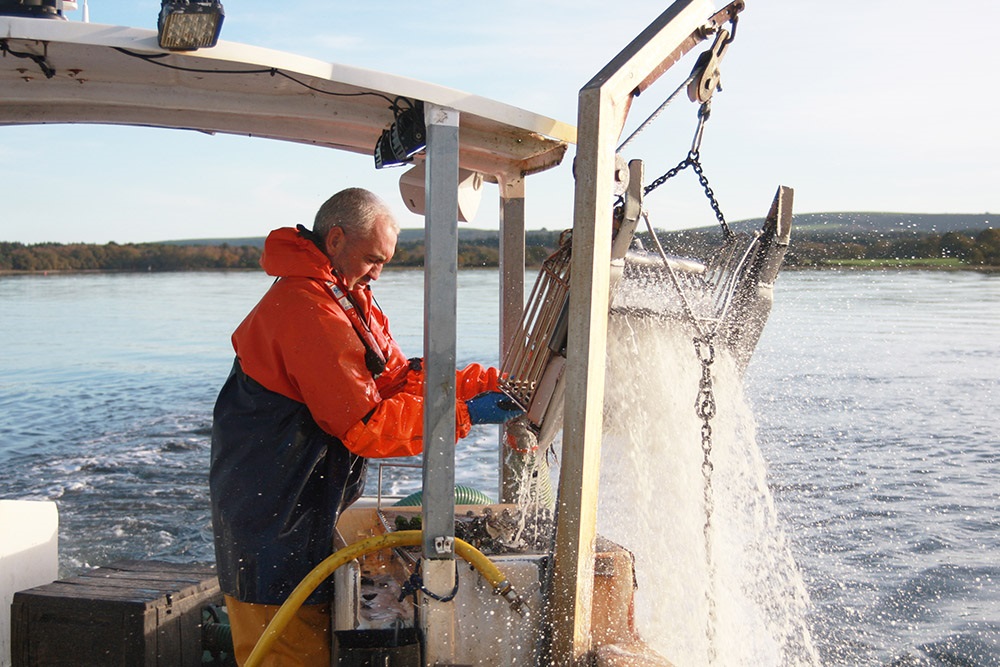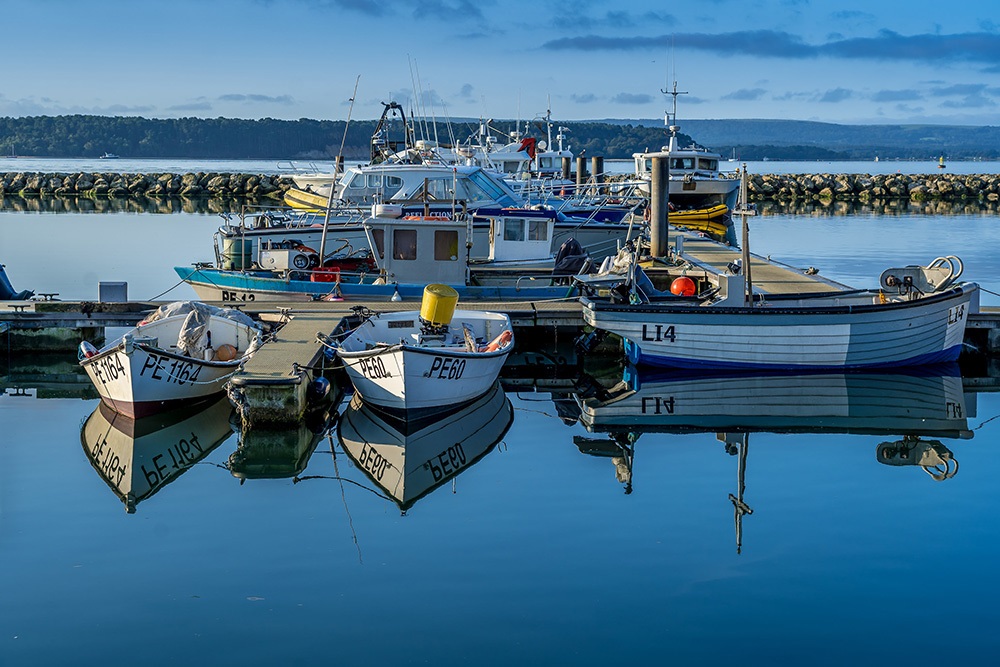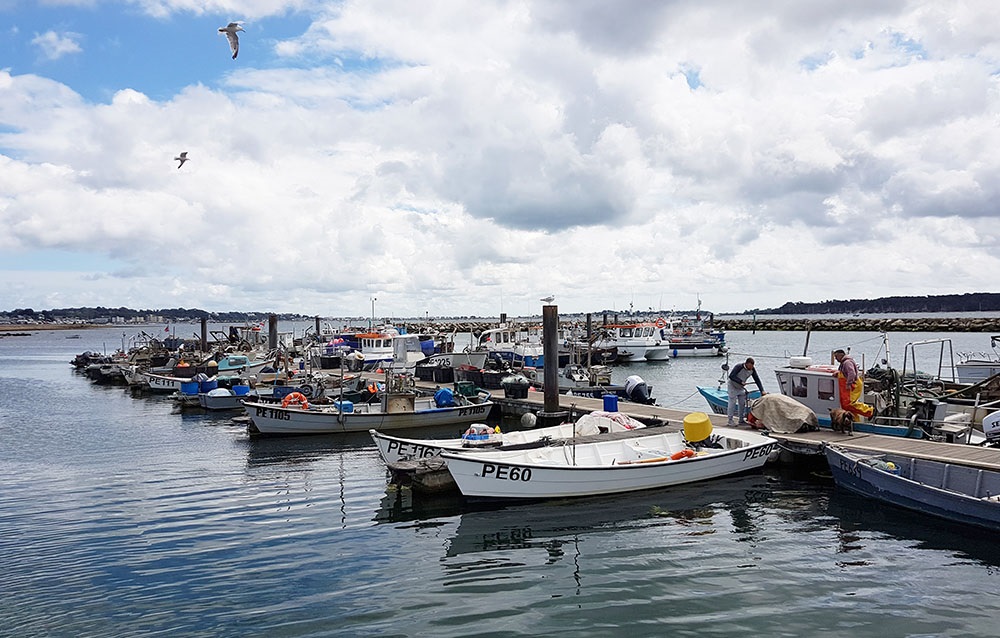Clam and cockle fishing in the bustling town of Poole, on England’s golden south coast, has been a key local industry in Dorset for over 40 years. Starting as a small artisanal fishery for the common cockle (Cerastoderma edule) and expanding with the introduction of the Manila clam (Ruditapes philippinarum ) in the 1980s, the MSC certified Poole Harbour fishery is a hub of activity every year between the months of May and December, when the shellfish in the bay are in their prime.
“It runs in the family. I’ve got two other brothers who do the same as me, and my father was a commercial fisherman before that” says Mike.
For the locals in Poole, which houses the largest natural harbour in Europe, the abundant waters of this small stretch of coast are vital to maintaining generational ocean livelihoods, fuelled by a love of the sea and the sense of freedom a day on the water brings.
“It’s very rewarding. It’s hard to put your finger on it really – it’s a feeling, and a way of life. And it’s not always easy. But I love being out there with nature. It’s just me and my machines catching the bounty of the sea” says lifelong fisherman Tommy Russell.
“I’m 70 next birthday, and I love it as much as when I was 17”, he laughs.
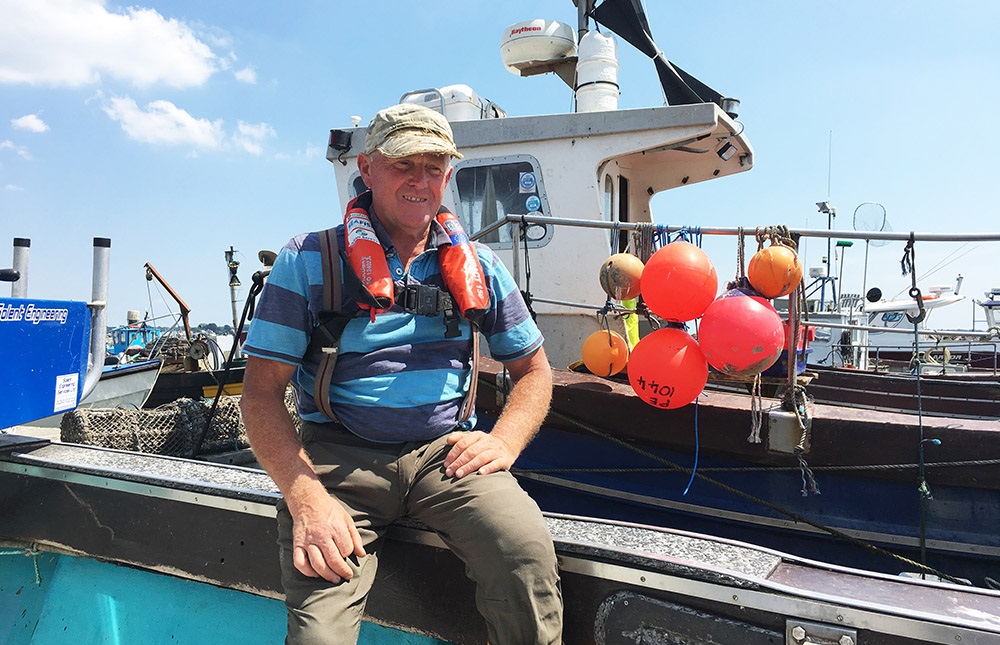
Tommy Russell
A turbulent past
Gaining MSC certification in 2018 under Southern Inshore Fisheries and Conservation Authority (IFCA) management, the Poole Harbour clam and cockle fishery is well known among local fishermen for having a reliable and plentiful stock of shellfish, which is carefully managed by everyone involved in the fishery.
“I think it’s some of the best stock in the world actually – it just replenishes itself, so long as you fish sustainably. You’ve got to leave enough of the stock behind as you can, it mustn’t be plundered”, says Tommy.
Measures are in place to ensure strong stock regeneration year on year, like the issuing of permits and regulations around not taking juvenile shellfish, but it hasn’t always been this way. The fishery was plagued by bouts of poaching for many years, which was to the detriment of the species, local environment and the fishing community in Poole.
“They were keeping all the small [clams and cockles] – the undersize. That was probably the biggest problem in Poole – obviously the poachers actually being out there in the first place – but the taking of the small ones was really affecting the fishery.” Mike says, recalling the days when there were up to 40 illegal boats in the harbour. Removing the smaller shellfish from the seabed prevents them from being able to grow and reproduce, which reduces their overall numbers and impacts the health of the stock.
“Whatever you’re catching, it needs to breed. The minimum size has got to be above the breeding size.” Tommy explains.
“I think it’s some of the best stock in the world actually – it just replenishes itself, so long as you fish sustainably.”
Journey to sustainability success
Thanks to new management, a programme of improvements was rolled out, and the fishery built positive relationships with multiple stakeholders, like the Poole and District Fishermen's Association and Dorset Wildlife Trust, which resulted in MSC certification in 2018.
This new approach, of committing to MSC certification and addressing management of the fishery, stamped out illegal activity and secured a future for the clam and cockle fishermen of Poole to continue the valued tradition of harvesting shellfish. Dr Sarah Birchenough, deputy chief and inshore conservation officer at Southern IFCA, says the results speak for themselves: “The current management under the permit by-law has taken care of a lot of those issues. We went down by 95% in terms of illegal activity since 2015 and it’s really maintained at that low level.”
Infrastructural developments have allowed the stock of clam and cockles to flourish, too. Sarah explains that the fishing gear used by the fishermen has been specially adapted to enable juvenile shellfish to remain on the seabed when a catch is hauled in, where they can grow and multiply.
On a tour of the harbour, she points out the changes that have been made to the fishermen’s dredges, a rake-like tool that’s towed across sandy beds on the sea floor to bring up the shellfish that are hiding under the surface.
“The spacing between those bars has to be at least 18mm. It’s all designed to minimize undersize [shellfish] being brought up. It gets secondarily sorted on the riddle table and we give the fishermen gauges to measure the size of the individuals. The minimum landing size for the Manila clam is 35mm. They [the undersize] go straight back into the water, they’re quite resilient clams and cockles because they’ve got quite tough shells, they re-bury themselves quite easily” she explains.
Stock assessments, the process of collecting, analysing, and reporting on the state of a stock of fish and estimating how many can be caught without threatening the species, are carried out regularly in Poole Harbour. Sarah explains that they help to identify areas where there are a lot of undersize shellfish, and, therefore, where more inspections and patrols need to be carried out.
“The stock data is really helpful for identifying what is going on in each area of the harbour” she says.
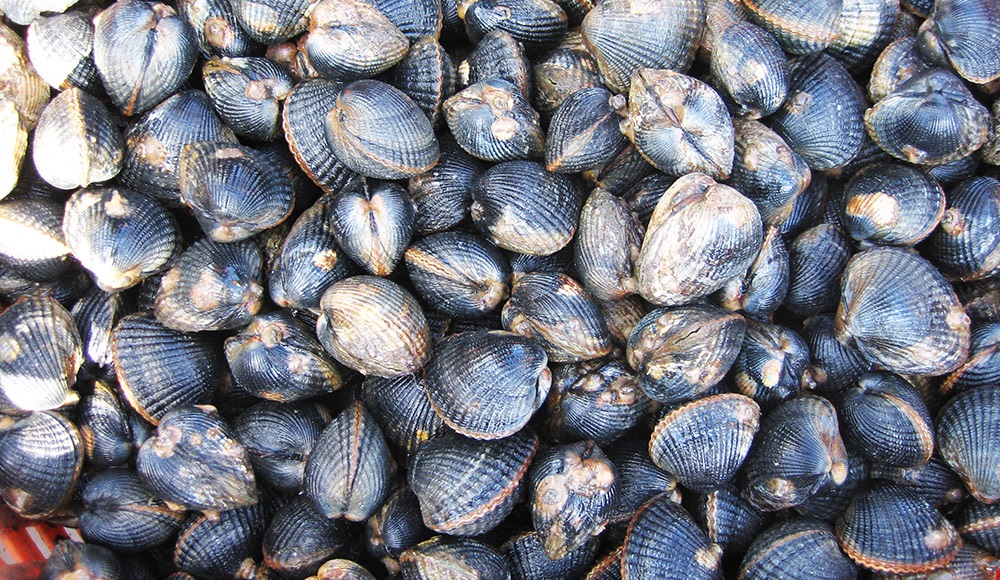
Fishing for the future
For the clam and cockle fishermen of Poole, protecting and nurturing the shellfish in its shallow, sandy bays is fundamental to the continuation of an important part of Dorset’s local economy and two iconic British coastal species.
“It just makes no sense to keep taking from something that doesn’t have the ability to replenish itself” says fisherman John Ballet, 56, who has been cockle fishing since he was a child, and also farms shellfish in Poole.
“Obviously, for the fishermen, it’s our living. We’ve got more interest in sustainability than anyone because it affects us the most. The fishery we work in, it’s very sustainable. I can go out and catch X amount in one place one year and go out the next year and it’ll be the same, if not better”, Mike says.
For Tommy, who speaks fondly about his years on the water and affinity with “the sparkling sea” surrounding Poole, as well as the familiar seabirds that soar above his boat, sustainable fishing is about looking ahead and putting the environment first.
“There needs to be a future for what comes behind you. You can’t plunder nature. It’s been done so many times with humans and it’s been proven so many times that if you let them breed, the stock will replenish itself. When I’m out there, it’s just me with nature. I never fight it.”
“Obviously, for the fishermen, it’s our living. We’ve got more interest in sustainability than anyone because it affects us the most”
Putting the ocean first
The natural harbour in Poole is renowned for its unspoilt, wildlife-abundant landscape, made up of marshland, mudflats, reedbeds, shallow bays, and expanses of tranquil open water.
Combined, they form an important habitat for protected birds and marine species, making the harbour a Site of Special Scientific Interest (SSSI).
The fishery operates in a way that is compatible with the conservation objectives of Poole Harbour, which also contains a Marine Protected Area (MPA). Lots of work has been undertaken with fishermen over the past year to help them recognise Endangered, Threatened and Protected species (ETP) in the harbour and understand how to minimise their interactions with them. The fishery was awarded a grant from the MSC’s Ocean Stewardship Fund (OSF) to help with this.
Measures include cordoning off areas with known sensitive habitats to fishing activity for protection, like saltmarsh and seagrass, which are key for supporting marine biodiversity, and temporal restrictions that prevent fishing during the roosting and feeding seasons of wild bird populations.
“There’s another area [of seagrass] being put forward now. They’re just increasing the area around it to make sure it remains protected. We’re able to work on the cockle beds without disturbing the seagrass. We’ve got coordinates, you know latitude and longitude, of the areas where it is, so we steer well clear of it” explains John.
Seahorses and seals can also be found in the harbour, and action is being taken to minimise disturbance from fishing activity.
“Through the ETP project, some of the gear on the vessels is changing to make them quieter and safer. Lots of the boats have the dredges connected internally rather than having a sperate pump and things which all helps to reduce noise – little innovations are happening” says Sarah
“Through the ETP project, some of the gear on the vessels is changing to make them quieter and safer. Lots of the boats have the dredges connected internally rather than having a sperate pump.”
A remarkable species
A day at sea during the clamming season for Tommy, John and Mike means leaving the dock early at 6am and fishing non-stop for six to eight hours.
“You definitely need patience and determination. If you get a bad day, you just have to shake it off and get ready for the next good one”, says Mike.
In the harbour, the act of fishing and harvesting the shellfish helps with sustaining the health of the species itself, by controlling its population size.
“I can honestly say (after fishing 35 plus years) fishing for these peculiar species, that the highest sustainable yield is only possible due to us harvesting the species. If left unfished, due to the species producing massive amounts of spawn to ensure survival, it also creates a mass die off, due to lack of food”, Mike reports.
Poole Harbour fishermen are part of an important regenerative cycle, helping to preserve clams and cockles, as well as the wider ocean environment. For Tommy, years of harvesting shellfish has led to a fascination at their resilience.
“They’re remarkable creatures. They live a lot of their life very deep in the mud where you can’t touch them! They just dig down a foot or more. Fishing sustainably means they’re always going to be there.”
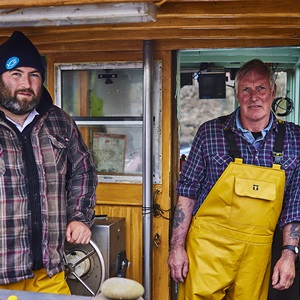
Shetland brown crab
The only brown crab fishery certified as sustainable in the world.
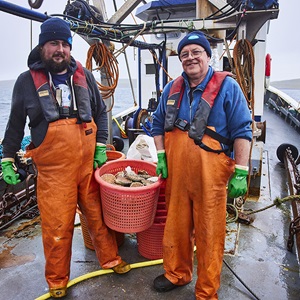
Shetland scallops
How a whole community comes together to ensure the future of scallops.
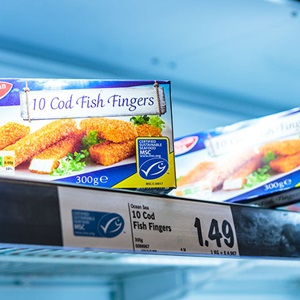
How to enjoy affordable, sustainable seafood
Enjoying sustainable fish doesn’t need to cost the ocean, or the earth.

